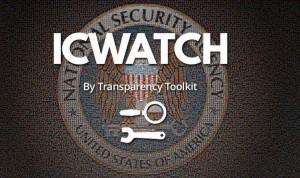U.S, North Korea hope to finalize food deal next week
(REUTERS) – The United States and North Korea will meet in Beijing next week to finalize details of a new U.S. food aid program that has opened the door to a renewal of nuclear talks with Pyongyang, the U.S. State Department said on Friday. . . .North Korea announced on Wednesday that it would suspend key elements of its nuclear weapons program and allow U.N. inspectors to return as part of a deal with the United States that could see the eventual resumption of nuclear disarmament talks that broke down in 2008. The United States, in turn, pledged to resume food aid to the isolated and impoverished country, although Washington has repeatedly said the two issues are not directly linked. . . [read the rest]
——————
Astroturf at GITMO for terrorists:
(Washington Post) – When the authorities at Guantanamo Bay closed Camp 4, the open-air, communal-living facility here, and moved the detainees to an indoor facility called Camp 6, the inmates lost the small patch of dirt where they played soccer. Or, as they call it, football. The competition, though, was not lost forever.
The Pentagon has said it is restoring the glorious game to Gitmo with a new 28,000-square-foot “super-rec” space that includes a field surrounded by a gravel track with shaded areas in the corners. Detainees will reach the field by walking through covered walkways that the military is calling “habitat trails” — rather like the tunnel to the pitch at, say, Manchester United’s Old Trafford stadium, but without the crowds.
The cost of the project: $744,000.
Officials here said the detainees had desperately missed their matches and boosting the morale of the inmates makes the job of the guard force easier. . . [read the rest]
———————-
INSIDER THREAT:
Afghan Teacher, Soldiers Kill Two U.S. Troops
(ABC News) – An Afghan teacher brought in to teach basic reading and writing to Afghan security forces, along with two Afghan soldiers, turned guns on American soldiers today, killing two, NATO officials said.
The trio opened fire with automatic rifles and a rocket-propelled grenade on a guard tower in southern Afghanistan staffed by American soldiers before dawn Thursday, according to Afghan and NATO officials. The attackers briefly escaped after the attack but were run down by a quick reaction force that included a helicopter, a NATO official said. The teacher and one soldier were killed, and the other Afghan soldier was captured.
Six American soldiers have been killed in Afghanistan in three separate incidents since the U.S. military admitted to burning the Muslim holy book, the Koran, sparking nationwide protests and riots. And so far this year, more than one in six of the NATO soldiers killed in Afghanistan have been killed by their Afghan partners. . . [read the rest]
Two U.S. troops gunned down on NATO-Afghan military base
(Washington Post) . . . . . .Thursday’s killings happened before dawn at a base in the Zhari district of southern Kandahar, said Niaz Mohammad Sarhadi, Zhari’s district chief. He said a local civilian teaching Afghan army literacy courses got control of a soldier’s rifle and fatally shot the two American service members, who were on duty inside the base.
A NATO statement said that in addition to the Afghan civilian, a second man who was believed to be a member of the Afghan National Army also was involved in the shootings. The two men “turned their weapons indiscriminately” against NATO and Afghan soldiers, the statement said, killing the two coalition troops. . . .
(TIME) – Pentagon officials won’t concede it, but privately defense officials say the spate of “green-on-blue” killings by Afghans of their purported U.S. allies over the past two weeks could lead to major changes in U.S. strategy. If they continue, the U.S. will face a brutal choice: pull out, or double down. . . . .
. . . But the Taliban know that one way to drive the Americans out is to make such killings a regular occurrence. If they’ve got more sleeper agents in reserve, they’ll be rolling them out in the coming days. The Pentagon recently released data showing that 75% of the more than 45 so-called “green-on-blue” attacks since 2007 have happened in the last two years.
“The risk is so high that we may discover it through hard lessons — a.k.a. lives of senior officers and NCOs who would run the [U.S.] Army if they are not killed by the people they are advising,” someone from Afghanistan anonymously posts on Best Defense. “No one wants to talk about the big elephant in the room: How many infiltrators or complicit Taliban really are in the ANSF [Afghan National Security Forces]. Is it really worth the risk to put leaders our there like this?” . . . [read the rest]
————————-
The Numbers: What are the federal government’s sources of revenue? (Tax Policy Center)
–
OPSEC, Cybersecurity Problems:
Stolen NASA laptop contained space station control codes
A laptop stolen from NASA last year was unencrypted and contained command and control codes for the International Space Station on it, the agency’s inspector general told a House subcommittee Wednesday.
In his testimony before a House Science, Space and Technology subcommittee, NASA Inspector General Paul Martin said the notebook computer stolen in March 2011 “resulted in the loss of the algorithms” used to control the space station. This particular laptop, Martin said, was one of 48 NASA notebooks or mobile devices stolen between April 2009 and April 2011.
Some of these thefts resulted in the leak of sensitive data “including export-controlled, Personally Identifiable Information, and third-party intellectual property,” as well as Social Security numbers and data on NASA’s Constellation and Orion programs, Martin said. [NASA Computer Hacked, Satellite Data Accessed]
The actual number of stolen and compromised devices could be much higher because NASA relies on employees to self-report incidents. . . . .
. . . . In 2011, NASA, which Martin rightly called a “target-rich environment for cyberattacks,” was the target of 47 advanced persistent threats, 13 of which successfully compromised NASA computers.
These attacks are part of the 5,408 cybersecurity incidents in 2010 and 2011 that resulted in unauthorized intrusions or malware being planted on its systems and cost the space agency an estimated $7 million.
“These incidents spanned a wide continuum from individuals testing their skill to break into NASA systems, to well-organized criminal enterprises hacking for profit, to intrusions that may have been sponsored by foreign intelligence services seeking to further their countries’ objectives,” Martin said.
In one case, intruders traced to Chinese-based Internet addresses gained full access to key computer systems and sensitive user accounts at NASA’s Jet Propulsion Laboratory, Martin said. . . . .”In other words, the attackers had full functional control over these networks,” he said. . . . . .[read the rest]
NASA Cybersecurity: An Examination of the Agency’s Information Security
Statement of Paul K. Martin, Inspector General, National Aeronautics and Space Administration
Testimony before the Subcommittee on Investigations and Oversight, House Committee on Science, Space, and Technology














You must be logged in to post a comment.